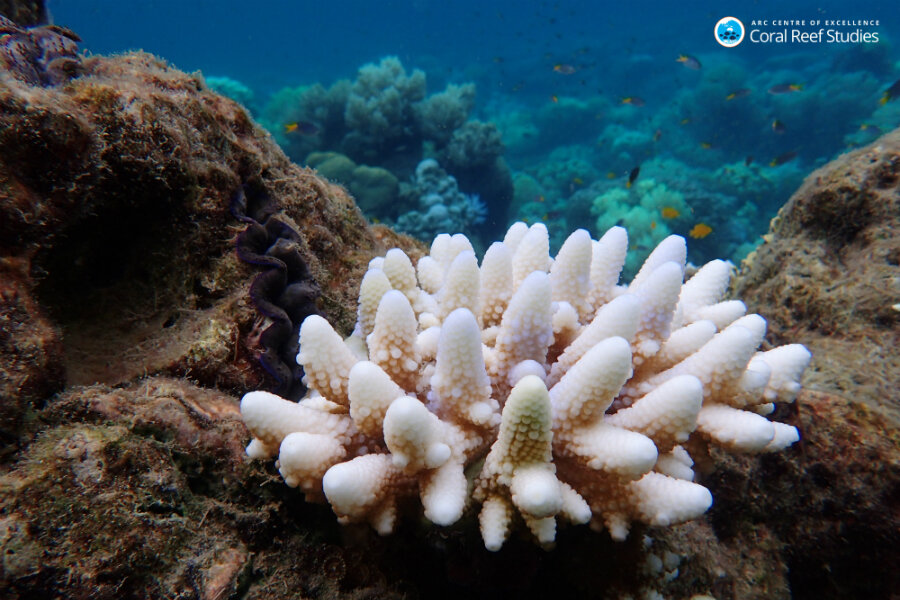Coral bleaching now a 'global-scale event'
Loading...
Australia’s Great Barrier Reef is likely to be, or may have already become the most conspicuous casualty of climate change, scientists say.
A third massive bleaching battered the reef in 2016, according to a paper published Wednesday in Nature. Large parts have died completely, while other sections are merely damaged, but unless the seawater cools soon the outlook for recovery is grim. Efforts to save the iconic landmark may be too late, but if reefs worldwide are to escape what the paper calls a “global-scale event,” an immediate reduction of emissions is essential.
“We didn’t expect to see this level of destruction to the Great Barrier Reef for another 30 years,” Terry P. Hughes, director of a government-funded center for coral reef studies at James Cook University in Australia and the lead author of a paper, told The New York Times.
Whether the reef has died or not is a topic of debate, with some writing obituaries and others arguing reports of death have been somewhat exaggerated. Despite their ghastly appearance, bleached reefs may still be alive.
Coral relies on a symbiotic relationship with algae to live, accepting photosynthesized food in return for a place to live. But when the water warms by as little as a couple degrees Fahrenheit, algae spits out chemicals poisonous to the coral. The white coral then evicts the colorful algae as a measure of self-defense. At this point, the reef is still alive but has no way to feed. If water temperatures drop, algae can regrow but if they stay warm the reef will starve.
Unfortunately for the Great Barrier Reef, many sectors seem to be well into the starving stage. “In the north, I saw hundreds of reefs – literally two-thirds of the reefs were dying and are now dead,” said Dr. Hughes.
Hughes released a map of the damage, based on surveys from low-flying planes and helicopters, on Twitter.
The culprit is global warming, say the authors, with damaged reef areas corresponding directly with ocean temperature, which the National Ocean and Atmospheric Administration (NOAA) said set records in 2015 and 2016.
“Climate change is not a future threat,” Hughes told The New York Times. “On the Great Barrier Reef, it’s been happening for 18 years.”
The key issue for reef recovery is the spacing between bleaching events. Other corals damaged by warm temperatures have made impressive recoveries, but only with the benefit of a decade of cooler waters to help algae reproduce. The current study found that between the three bleaching events in 1998, 2002, and now 2016, less than 10 percent of the Great Barrier Reef has escaped the stress of bleaching. What’s more, a fourth bleaching appears to be following right on the heels of the third.
“None of us were expecting the water to be heating up again right now,” coral reef scientist Julia Baum of Canada’s University of Victoria told the Associated Press. “I think it’s beyond what any of us could have imagined. It’s our worst nightmare.”
Previous studies had suggested local fishing and water pollution may pose even more of a threat than climate change, but this study quashes the hope that careful management can protect coral, at least in the case of the Great Barrier Reef.
“We find that local management of coral reef fisheries and water quality affords little, if any, resistance to recurrent severe bleaching events: even the most highly protected reefs and near-pristine areas are highly susceptible to severe heat stress,” the authors write.
Scientists around the world voiced their frustration that past conservation efforts may have been in vain, hopes dashed by warming waters.
“It all seems so quaint now, really,” Kim Cobb, a climate scientist and coral researcher at the Georgia Institute of Technology in Atlanta who wasn’t part of the study told the AP. “A future that we thought was decades coming is basically here.”
While the future of the Great Barrier Reef, and the billions of dollars in tourism revenue it brings Australia, may be in jeopardy, it’s not too late for other reefs around the world. Their preservation holds humanitarian interest, too, as hundreds of millions of people depend on reef fish for protein, The New York Times reports.
“Securing a future for coral reefs, including intensively managed ones such as the Great Barrier Reef, ultimately requires urgent and rapid action to reduce global warming,” reads the final sentence of the paper.
Meanwhile, NOAA measured a record carbon dioxide concentration of 405 parts per million (p.p.m.) in 2016, a record jump of 3 p.p.m. over the previous year. One bright spot? Carbon emissions seem to have plateaued.







